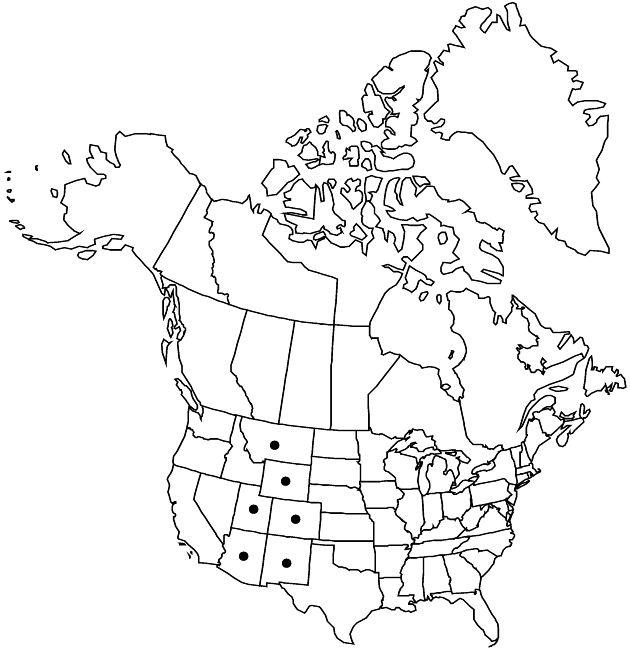Lorandersonia linifolia
Sida 21: 1622. 2005.
Shrubs, 70–350 cm (trunks to 20 cm diam.; soboliferous). Stems single, greenish when young, becoming tan to gray, fastigiately branched (± angled from leaf-bases), glabrous or scabridulous. Leaves ascending; blades with midnerves plus 2 fainter collateral nerves evident, broadly linear to lanceolate or oblong, 20–75 × 3–8 mm, flat, margins scabrellous, apices acute to acuminate, faces glabrous, gland-dotted (in shallow pits). Heads in corymbiform arrays 3–12 cm wide. Involucres obconic, 4.5–7 × 1.5–2.2 mm. Phyllaries 15–18 in 3–4 series, in 5 vertical ranks, mostly tan, midnerves evident on distal 1/2, ± keeled, elliptic to lanceolate, 0.7–6.5 × 0.5–1.1 mm, unequal, outer often thickened and herbaceous subapically, apices acute, acuminate, or rounded, faces glabrous or sparsely scabrous. Receptacles with 0–2 scales, 0–0.5 mm. Ray-florets 0. Disc-florets (4–) 5 (–6); corollas 4–5.5 mm, glabrous, lobes 1–1.5 mm; style-branches 1.9–2.3 mm, appendages subulate, 0.7–1.1 mm. Cypselae tan to brownish, subcylindric, 2.5–3.5 mm, 10–12-ribbed, densely hairy; pappi whitish tan, 4.5–7 mm. 2n = 18.
Phenology: Flowering summer–fall.
Habitat: Margins of alkaline streams, banks of larger rivers, other moist, low, alkaline sites, less often drier slopes
Elevation: 1200–2400 m
Distribution

Ariz., Colo., Mont., N.Mex., Utah, Wyo.
Discussion
Selected References
None.
Lower Taxa
"fine" is not a number.